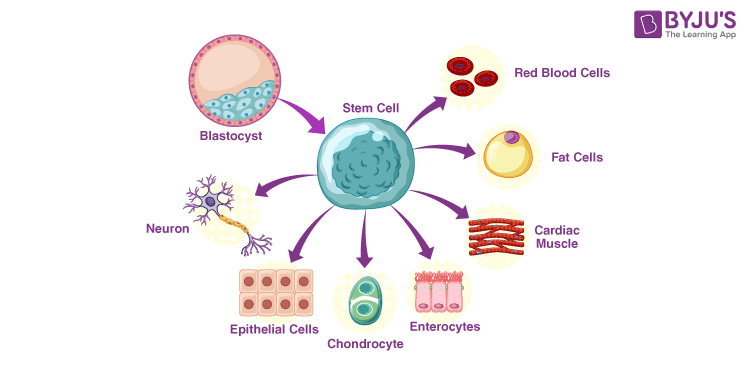The stem cells can be used to repair or regenerate damaged or diseased cells. These cells have the ability to develop into any kind of cell.

Adult Stem Cells
These stem cells are acquired from fully-grown adult organs and tissues. In other words, they are undifferentiated cells found in differentiated tissues (bone marrow and brain). They can fix and supplant the harmed tissues in the area where they are located.
Embryonic Stem Cells
The pluripotent cells play a vital role in developing the foetus. Thus, these stem cells are found only during the embryonic stage and are termed embryonic stem cells. These cells can differentiate into any type of cell. The embryonic stem cells can be totipotent, pluripotent, oligopotent, multipotent, and unipotent.
Difference between Adult and Embryonic Stem Cells
Every stem cell can renew and differentiate into new cells. Embryonic stem cells are especially precious due to their pluripotency. Even though they are pluripotent, we still use adult stem cells for therapies. This ensures a safe treatment. Also, they are easier to use and have the upper hand over embryonic stem cells. The following are some significant differences between embryonic and adult stem cells.
Adult Stem Cells |
Embryonic Stem Cells |
| Adult stem cells are undifferentiated stem cells in differentiated organs/tissues. | Embryonic stem cells are found during the early blastocyst stage. |
| They are multipotent. It means they can develop only into closely related cell types. | They are pluripotent. Hence, they can develop into any cell. |
| Location – bone marrow, brain, blood, liver, skin, skeletal muscles, adipose tissue. | Location – blastocyst |
Also see: Blastocyst
Frequently Asked Questions
What are the applications of stem cells?
Stem cells are used in the treatment of the brain, cardiovascular system, etc. The adult stem cells (hematopoietic cells) are used to treat sickle cell anaemia, tumours, and other immunological diseases. Also, they play a vital role in tissue regeneration. Thus, they are used in transplantation processes.
What is stem cell therapy?
This therapy is a type of regenerative medicine to treat diseases. The induced stem cells heal the damaged cells or accelerate the repair response in the damaged tissue.
What are the different types of stem cells?
The four types of stem cells are – adult stem cells, induced pluripotent stem cells, embryonic stem cells and mesenchymal stem cells. The induced pluripotent cells are the adult cells that have been adjusted to have pluripotency.
What is the difference between foetal and embryonic stem cells?
The stem cells from a foetus that can proliferate are termed foetal stem cells. They are multipotent, unlike pluripotent embryonic stem cells. Also, the foetal stem cells are a bit more differentiated.
Also Read:
Visit BYJU’S Biology for more interesting topics.
Comments